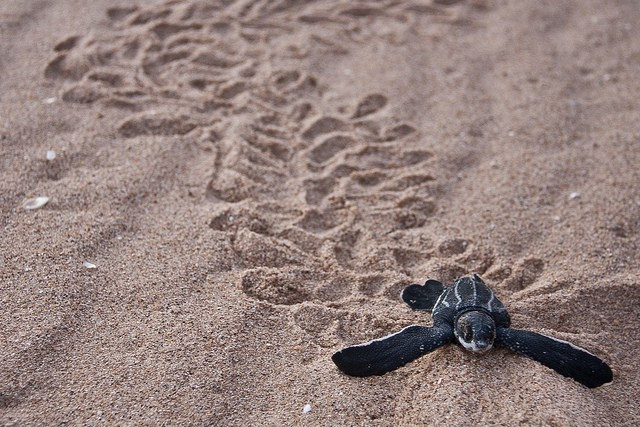Climate Change Could Wipe Out Existing Leatherback Turtle Species

Climate change could nearly wipe out the existing population of leatherback turtles by exacerbating the threats to the species, new research has found.
The study was conducted by a team of researchers from Drexel University, Princeton University, other institutions and government agencies and has been published in the latest edition of the journal Nature Climate Change.
Leatherbacks, the largest sea turtle species, are among the most critically endangered due to a combination of historical and ongoing threats including egg poaching at nesting beaches and juvenile and adult turtles being caught in fishing operations.
The new research on climate dynamics suggests that climate change could impede this population's ability to recover. If actual climate patterns follow projections in the study, the eastern Pacific population of leatherback turtles will decline by 75 percent by the year 2100.
"We used three models of this leatherback population to construct a climate-forced population dynamics model," stated the study's lead author Dr Vincent Saba, a research fishery biologist with the NOAA National Marine Fisheries Service Northeast Fisheries Science Centre. "Two parts were based on the population's observed sensitivity to the nesting beach climate and one part was based on its sensitivity to the ocean climate."
Leatherback turtle births naturally ebb and flow from year to year in response to climate variations, with more hatchlings, and rare pulses of male hatchlings, entering the eastern Pacific Ocean in cooler, rainier years.
Female turtles are more likely to return to nesting beaches in Costa Rica to lay eggs in years when they have more jellyfish to eat, and jellyfish in the eastern Pacific are likely more abundant during cooler seasons. Turtle eggs and hatchlings are also more likely to survive in these cooler, rainier seasons associated with the La Niña climate phase, as this research team recently reported in the journal PLoS ONE. Temperature inside the nest affects turtles' sex ratio, with most male hatchlings emerging during cooler, rainier seasons to join the predominantly-female turtle population.
The resulting projections indicate that warmer, drier years will become increasingly frequent in Central America throughout this century. High egg and hatchling mortality associated with warmer, drier beach conditions was the most significant cause of the projected climate-related population decline. This nesting population of leatherbacks could decline by 7 percent per decade, or 75 percent overall by the year 2100.
© Copyright IBTimes 2025. All rights reserved.





















